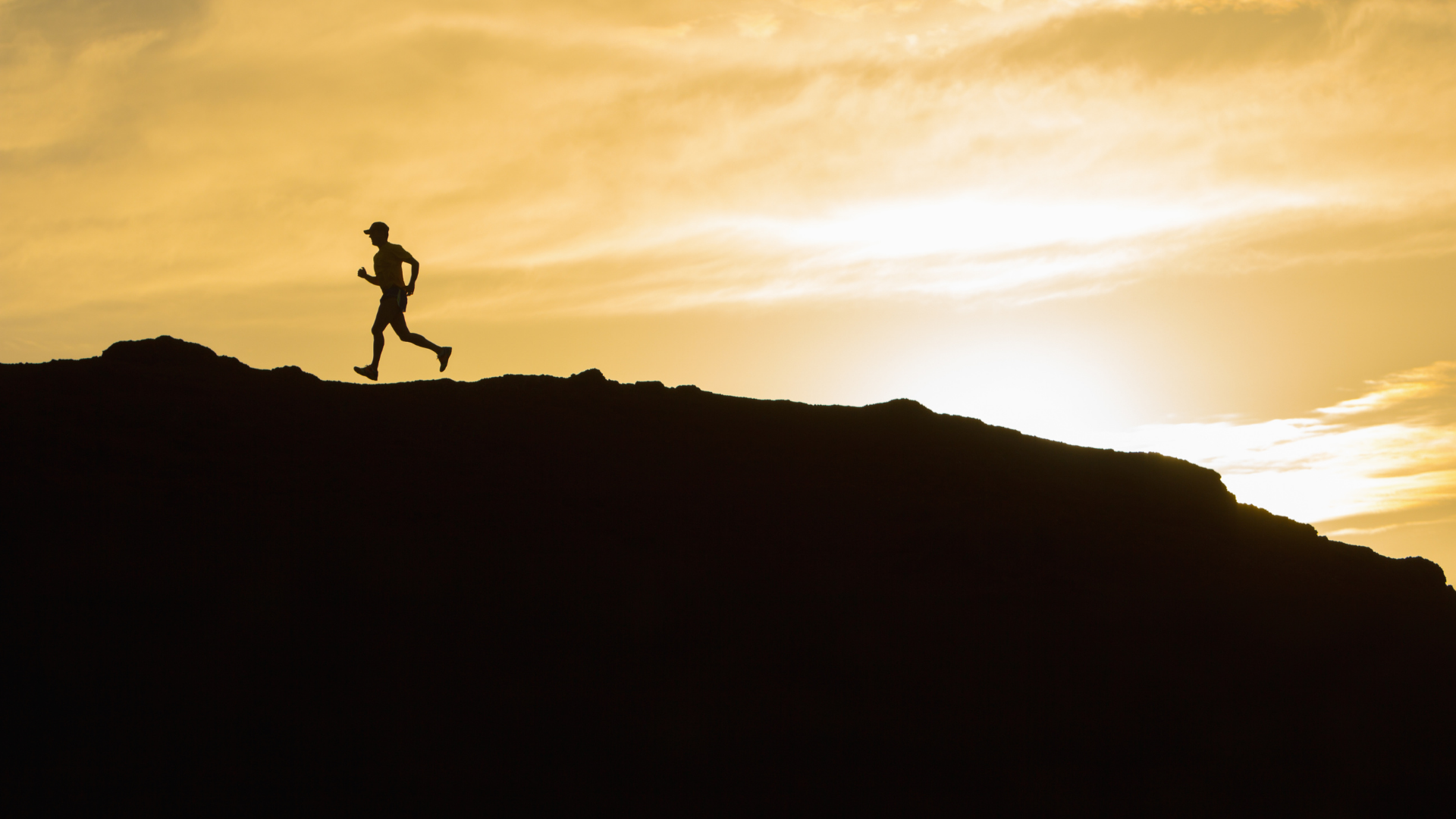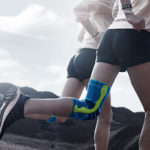Top 7 Strength Workouts That Will Make You a Better Runner
Overlooking the importance of strength training is a common beginner runner’s mistake which often leads to early injuries. If only I knew this when I was starting though!
I remember training for my first half-marathon. I didn’t have a coach who would stress how important it is to mix up your running routine with a strength workout or cross-training workout. And I ended up with a knee injury early on.
The obvious question follows – why is it necessary for runners to work on strength? Don’t muscles gain enough strength during running? The answer is yes and no. Muscles will gain some strength during running, but they also need to be trained in a variety of different ways. And for a variety of different reasons.
Advantages of strength training routine for runners
- Runners who do strength workouts are less likely to be injured
- Strength workout improves running performance by increasing leg power output
- Training focusing on muscle strength improves bone density and prevents osteoporosis
- Strength workout helps runners recover from running injuries faster
- Weight lifting helps runners with form because muscles pull in the opposite direction of joints to stabilize them
- Stronger muscles allow for better balance, coordination, and stability during running (core strength)
- If your goal is to run longer distances, then strength training will help you reach your goal sooner because it increases the amount of time that your body can spend at higher intensities before fatigue sets in
Step-ups
Step-ups are an excellent workout to tone your glutes and hamstrings. They can be completed with or without weights, so you can either use a barbell and plates to increase the weight of your steps or just step up onto a bench or chair and work your muscles without adding weight.
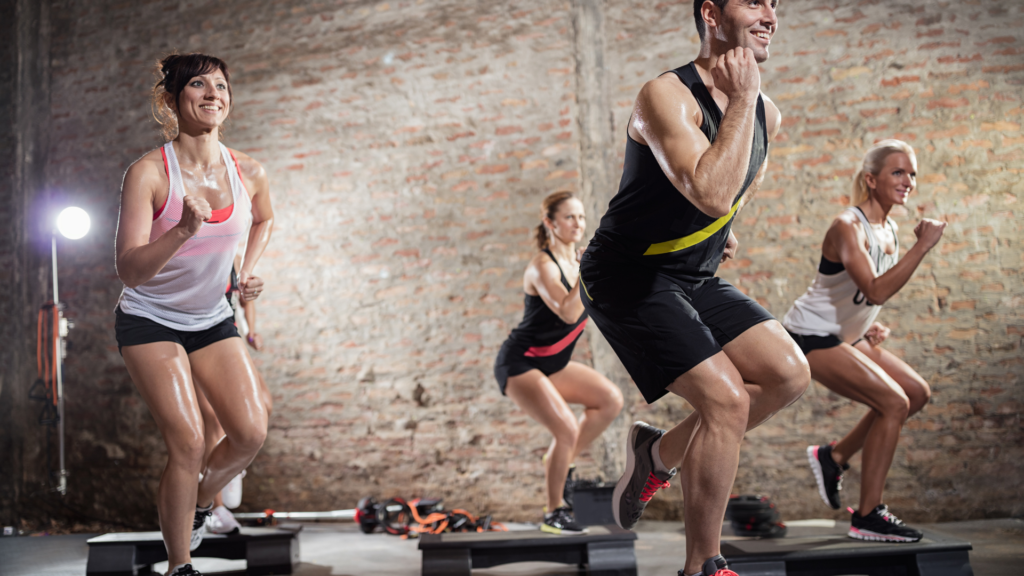
To start exercising, simply stand a few inches in front of the step with a hip-width stance. Hold onto the handrails for balance if needed. Step up onto the step by lifting one leg at a time until you’re standing straight up, then slowly lower back down.
Make sure to push off with your toes and keep a flat back. Complete about five to ten reps on each leg.
The main advantage of step-ups is that they work both the front and back of your leg muscles. Step-ups can also be done on a low bench or chair to target just one set of muscles. But always make sure you position yourself about two feet from the step or bench so you don’t strain your lower back.
Deadlifts
Deadlifting is an excellent full-body exercise that targets the glutes, hamstrings, core muscles as well as supporting leg, chest and arm muscle groups. Deadlifts are a primary exercise in many strength training programs.

To put yourself in starting position, stand with feet shoulder-width apart facing away from the barbell at hip height. Then, bend down toward the bar to grasp it with an overhand grip.
Bend the knees slightly and keep a flat back as you bend at the hips, pulling your shoulders down and back. This will allow you to lift more weight than if using only leg power alone.
Deadlifting is about building strength so don’t be afraid to use heavier weights in this exercise. Do not shrug the shoulders or round your back as you begin the movement. Keep looking forward while lifting with both legs and arms to maintain balance.
Enough With Deadlifts? 🙂
No matter what exercise regimen you’re following, it’s important that all muscle groups are strengthened in order for them to work together efficiently when running.
Squats
To build a stronger, more powerful lower body for running and to prevent injury, you can’t go wrong with squats. Squats are the ultimate leg exercise because they work your quads, hamstrings and glutes all at once.
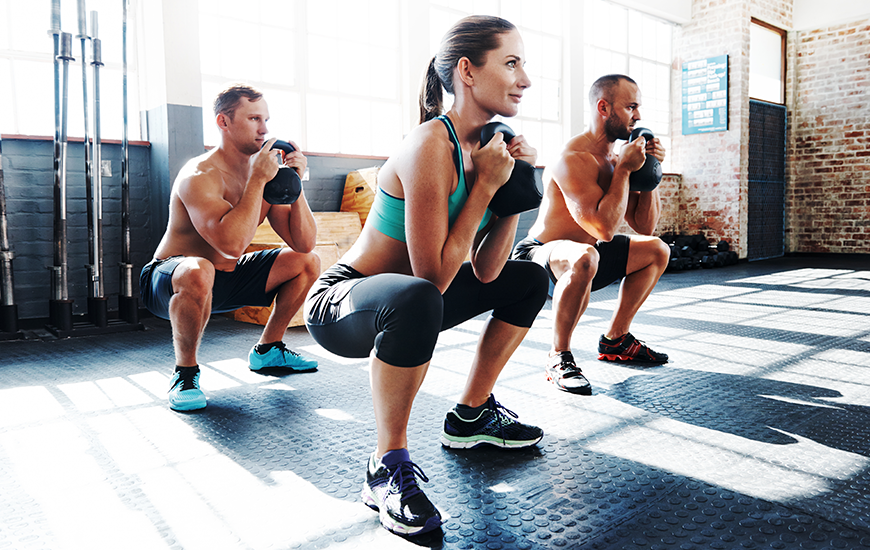
Perform them by standing up straight with feet shoulder-width apart and then bend your knees until your butt is close to the floor or parallel to it if possible. Hold this position as you squeeze in without bending forward too much from the hips or rounding out too far in your back.
Then stand up again so that you have completed one squat rep (or just do ten). If needed use something like an exercise ball between two chairs as leverage for balance before starting off on squats.
Don’t worry about going too low with your squats (as long as your knees don’t hurt) or aim for parallel if it works better for your legs.
Perform this exercise twice a week and in three months’ time, you will be able to run faster and do much more miles.
Walking lunges
Walking lunges are a favorite of mine because they require no equipment and can be done anywhere. They are ideal for every running strength training as they exercise your quads, hamstrings, glutes, abdominals and hips.
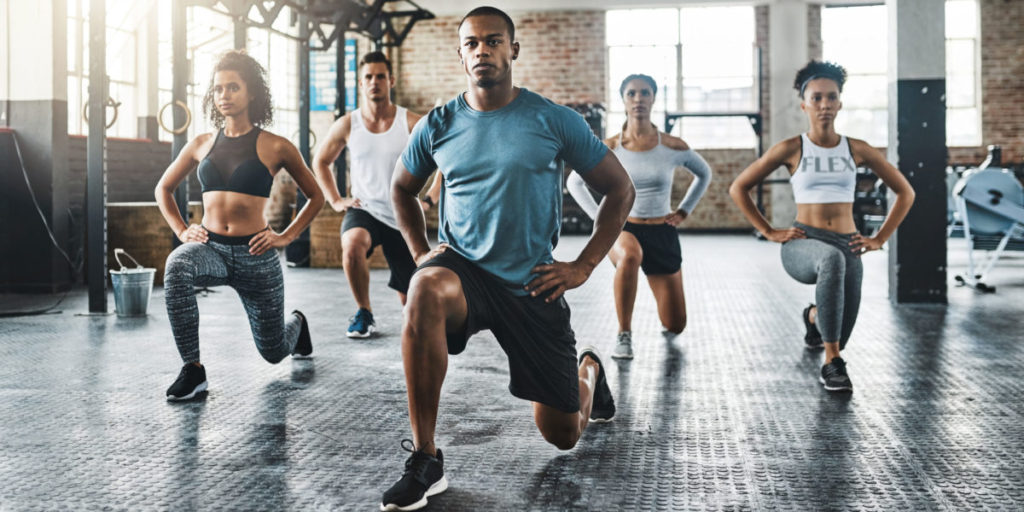
To perform a walking lunge, step forward with your right leg into a lunge position, keeping your left leg behind. Lower yourself down until both knees bent at 90 degrees. At his moment, your front knee holds most of your weight.
With slow controlled motion, push off with the right front foot to return to a starting position before stepping forward again, this time with the other leg. Continue alternating your legs and repeat for about 30 times.
You can do walking lunges while holding two dumbbells or kettlebells to add weight and resistance, but it is not obligatory. Experts recommend doing these strengthening exercises as part of your running routine in order to improve your strength, balance and agility.
The Plank
The Plank is a great exercise to tone your core strength and back area. It also strengthens the muscles in your shoulders, arms, chest, and hips – all areas needed for running. You can do this workout anywhere you have enough room (a living room floor or even on top of an office desk).

To start, put yourself in a push-up position on the mat. Place your hands shoulder-width apart and then bend your elbows to about a 90-degree angle. Place your toes on the floor, with legs straight in front.
To get in plank position, straighten your legs and hold yourself up with only your elbows and toes touching the mat. Keep your core tight and spine rigid as it would be if someone was going to punch you from behind. At the same time. try to maintain a straight line from head to toe supporting weight through forearms by keeping them parallel to each other. Squeeze abs tight and hold that position until time’s up!
Start with 4 series of 15 seconds with 15 seconds breaks in between. By the time you may want to work your way up to 45 – 60 seconds per repetition.
Wall sits
Wall sits are a great core exercise that can be done anywhere. They are also a great way to strengthen the quadriceps muscles.
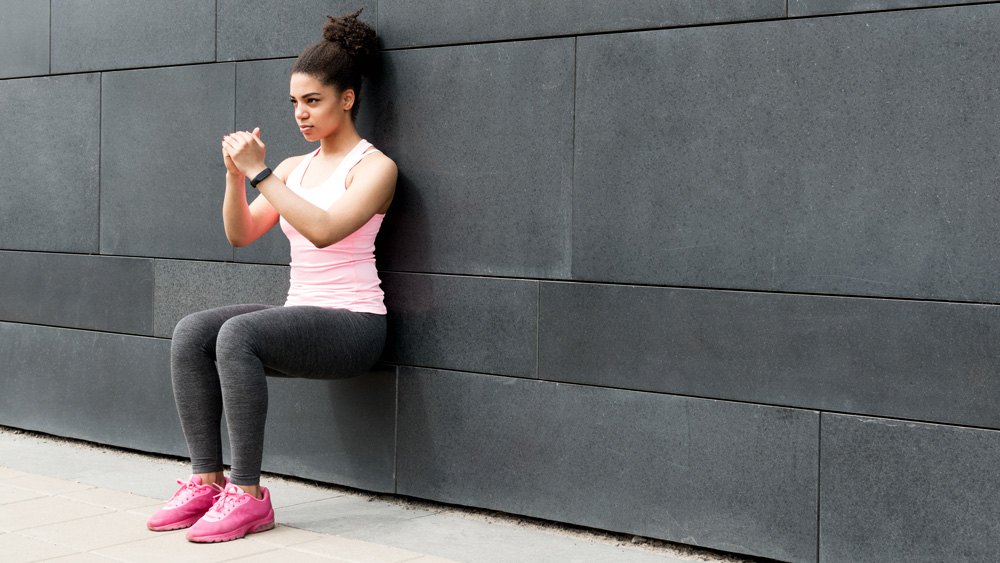
To perform a wall sit, stand with your back against the wall and put your right foot and left foot out in front of you until they are about hip-width apart. Stand with your feet flat on the ground. Slowly slide down the wall to a seated position (bending at the waist) as if you would be sitting on an invisible chair. After a couple of tens of seconds of “sitting”, press up your feet and return to an upright standing position.
While doing wall sits, your knees may experience pain. In that case, avoid going into a deep wall sit stance and rather keep your knees high.
Speed skaters
Speed skaters are some of the key exercises to make you a faster runner. While speed work is an important technique in many training plans, it is also a very interesting one. It will spicy up your training a bit.
These workouts are actually quite similar to walking lunges. Besides enhancing your quadriceps, hamstrings or hip muscles, speed skaters have a great advantage – they provide intense cardio. They actually replicate the moves of a speed skater.
Exercises that contain quick and explosive movements are an essential component of plyometrics, a style of training in which muscles exert maximum force in short periods of time and are designed to increase power and speed.
The starting position for speed skater
Your posture while standing should be as straight as possible with your shoulders pulled back. With your left knee and right knee bent and your body leaning in front, jump on alternating feet from one side to another. To make your jumps easier and smoother, pump your left arm and right arm according to the movement of the rest of the body.
Taking side steps instead of side jumps and touching your back foot to the ground is an easy modification that you may use in case jumping is too challenging for you. But always remember to use your arms to propel the motion.
You should do this exercise for 20 to 30 seconds, rest for one minute and repeat four times. It will not only help you to develop speed and agility but also improve your endurance.
The bottom line
Though this may seem like a daunting task, incorporating strength training into your running routine is quite simple. All you need to do is find time (not more than 30 minutes) for it during one of your rest days or on the weekends.
We recommend you select at least two of the above-mentioned exercises that will target different muscle groups and improve results from your runs.
Did any of these workouts catch your eye? Let us know how these exercises and workout routines work out for you by leaving a comment below!
Looking for exercise that will help you to lose some weight quickly? Read an article about interval training!
